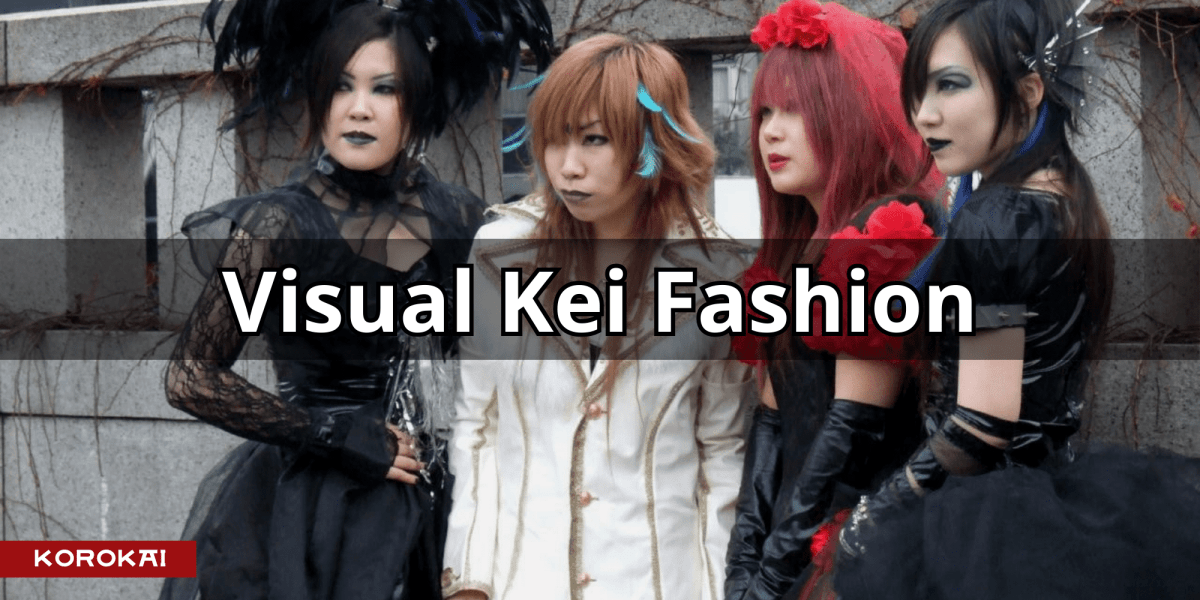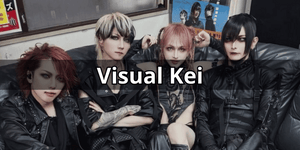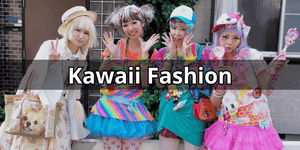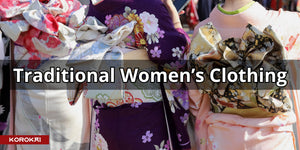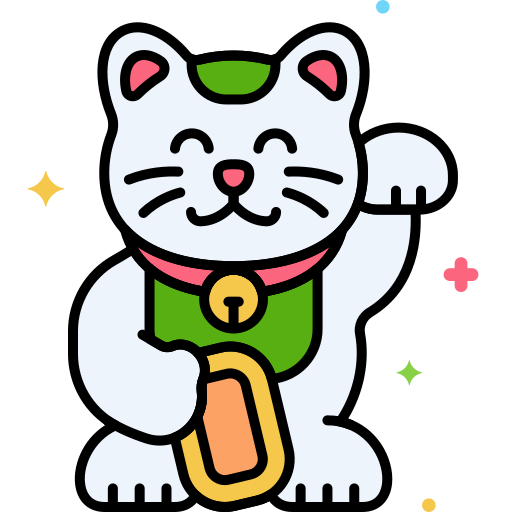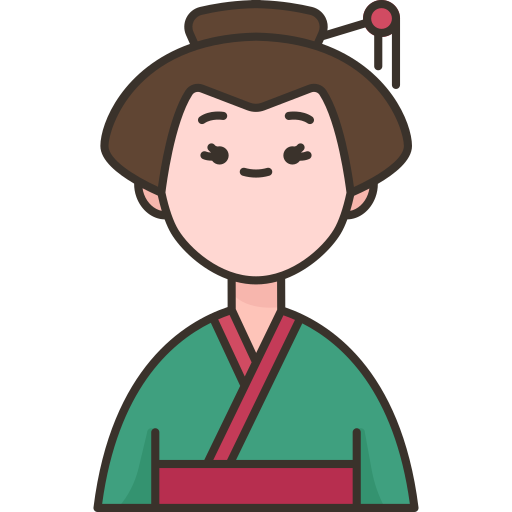More than just a musical style, Visual Kei is a cultural explosion that originated in Japan and has since spread around the world. Manifesting itself through a daring fusion of music, fashion and performance, this phenomenon is above all a celebration of individual expression and the defiance of conventional norms. From its tumultuous origins in the 1980s to its current global influence, Visual Kei has left an indelible mark on the music and fashion industries. Let's delve into the rich history and diversity of Visual Kei to understand its evolution and the impact it continues to have today.
The Origins of Visual Kei Style
As the 1980s drew to a close, the streets of Tokyo began to vibrate with a new energy, one that would turn the Japanese cultural scene upside down: Visual Kei. Harajuku, one of the best Tokyo's fashion district, quickly became the testing ground for this rising trend. Here, an audacious youth, thirsty for expression and individuality, began fusing elements of Western glam rock, punk and gothic with a uniquely Japanese aesthetic. The result? Fashion and music that, together, were as much a statement of identity as a rebellion against traditional Japanese conformity.
But Visual Kei was more than just an aesthetic: it was a movement. Propelled by iconic groups like X Japan, it transcended mere fashion to become a form of artistic expression. The name itself, translated as "visual style", testifies to the pre-eminence of the visual in this movement. Concerts weren't just musical performances; they were visual fireworks, with performers draped in elaborate costumes and bold make-up. These roots, blending audacity and expressiveness, laid the foundations for a movement that continues to fascinate decades later.
Fashion With Many Aesthetic Influences
Visual Kei, though unique in its genre, draws its inspiration from several earlier movements, creating a fusion of influences all its own. The first and most obvious of these influences is the glam rock of the 70s and 80s, popularized by Western icons such as David Bowie. The exaggerated make-up, elaborate costumes and flamboyant attitude of glam rock resonated with Visual Kei artists. The punk movement, with its rebellious attitude and distinctive clothing styles, as well as the dark elegance of gothic fashion, also helped shape the Visual Kei aesthetic. Nor should we forget the traditional Japanese touches, whether in reinterpreted kimono patterns or geisha-inspired hairstyles.
However, what makes Visual Kei so captivating is its ability to blend these seemingly disparate elements into a coherent whole. Each artist or group brings its own interpretation, sometimes accentuating the punk aspect, sometimes leaning towards more traditional Japanese motifs, but always with an innovative and daring approach. This mosaic of aesthetic influences makes Visual Kei an unparalleled visual spectacle, constantly evolving while remaining true to its roots.
Key Elements of the Visual Kei Fashion

Like every Japanese fashion, Visual Kei is made up of different elements that are easily distinguishable. And it's not just a fashion; it's a statement, a rebellion, and above all, an art form. Here are some of the key elements that define this unique aesthetic:
- Bold make-up: One of the most emblematic elements of Visual Kei is make-up. Whether theatrical, gothic or even sometimes scary, it often serves to accentuate emotions and create a character.
- Visual Kei Hairstyle: Hair plays an essential role in the Visual Kei look. Tall hairstyles, often dyed in bright or contrasting colors, add drama to the overall look.
- Mixed clothing: Visual Kei defies gender norms. It's not uncommon to see men wearing skirts, corsets or other traditionally feminine pieces.
- Ostentatious accessories: From studded leather to oversized jewelry, accessories complete the look. Every detail counts, whether it's necklaces, bracelets or imposing rings.
- Traditional Japanese motifs: Although Visual Kei is strongly influenced by the West, it doesn't deny its roots. Touches of traditional motifs, such as those found on kimonos, can be incorporated into outfits.
The Different Sub-Genres to Know

The world of Visual Kei extends far beyond its flamboyant façade, offering a diversity of sub-genres, each with its own nuance and significance. These variations, though distinct, all bear the indelible mark of Visual Kei while broadening its aesthetic and musical spectrum.
- Oshare Kei: This is the colorful incarnation of Visual Kei, favoring bright hues and cheerful motifs. Far from the seriousness of certain sub-genres, Oshare Kei shines through its playful approach, often flirting with a kawaii aesthetic. Bold patterns, bright accessories and fantastical hairstyles are the norm here.
- Eroguro Kei: Oscillating between the erotic and the grotesque, this sub-genre combines provocation and theatricality. Horrific themes, provocative texts and visual aesthetics reminiscent of macabre art are not uncommon.
- Angura Kei: Celebrating Japan's cultural roots, Angura Kei incorporates elements of Japanese folklore. These include modernized kimonos, Noh masks and songs evoking ancestral stories.
- Kote Kei: Nostalgic for the first waves of Visual Kei, Kote Kei is strongly inspired by 80s glam rock. Leather, chains and intense gothic make-up dominate this sub-genre.
- Tambi Kei: More recent than the others, Tambi Kei seeks to fuse Western aesthetic elements with traditional Visual Kei style. The result is a synergy between modernity and tradition, where artists play with androgynous silhouettes and contemporary motifs while retaining the essence of Visual Kei.
Iconic Visual Kei bands

Born of bold fusions of genres such as glam rock and punk, this movement has given birth to icons. From avant-garde looks to memorable performances, here are just a few of the bands that made Visual Kei history:
- X Japan: true trailblazers, X Japan are often cited as the founding band of the Visual Kei movement. Their blend of deeply melodic ballads and energetic rock catapulted them to the forefront, shaping the genre for generations to come.
- Dir En Grey: Captivating and often dark, Dir En Grey combined poignant themes with intense music, ranging from the heaviest metal to the softest ballads, capturing the attention of an international audience.
- Luna Sea: Combining alternative rock and gothic aesthetics, the band is famous for its distinctive musical style and memorable compositions that have captivated many a fan.
- the GazettE: Incorporating contemporary elements into Visual Kei, the GazettE stands out for its ability to evolve with the times while retaining the genre's roots.
- Malice Mizer: Fusing elements of baroque music with a gothic aesthetic, their fantastical, theatrical universe has established them as one of the pillars of Visual Kei.
- Versailles: Known for their "Rococo" aesthetic, they blend metallic symphonies and theatricality, offering fans a unique visual and auditory experience.
Influence and Fans Around the World
Iconic Japanese fashions of the '80s, Visual Kei has transcended the boundaries of music to become a cultural force in its own right, influencing fashion, art, and perceptions of masculinity and femininity. His bold aesthetic, combining theatricality and androgyny, challenged social conventions, providing a platform for expression for those who felt the need to defy established norms. Visual Kei fashion, with its voluminous hairstyles, dramatic make-up and unique outfits, paved the way for a new form of self-expression, inspiring designers and stylists around the world.
Internationally, the influence of Visual Kei has manifested itself in many ways. Many Western bands have been influenced by its aesthetic and music, adapting some of its elements to their own styles. What's more, with the expansion of social media and globalization, Visual Kei has found a passionate worldwide audience, leading to dedicated festivals and conventions all over the world. This global reach has solidified its place not only as a musical genre, but also as a cultural revolution that continues to fascinate and inspire.
Conclusion
Contemplating the journey of Visual Kei, one is struck by its adaptability and universal resonance. From its Japanese roots to its worldwide recognition, this movement has proved that art, in all its forms, can transcend cultural barriers. While fashion and music trends come and go, the essence of Visual Kei, which advocates authenticity and unfettered expression, endures. It reminds us of the power of individuality and the importance of defying convention. Through Visual Kei, we see not only the evolution of a genre, but also the constant reflection of our quest for identity and meaning.

